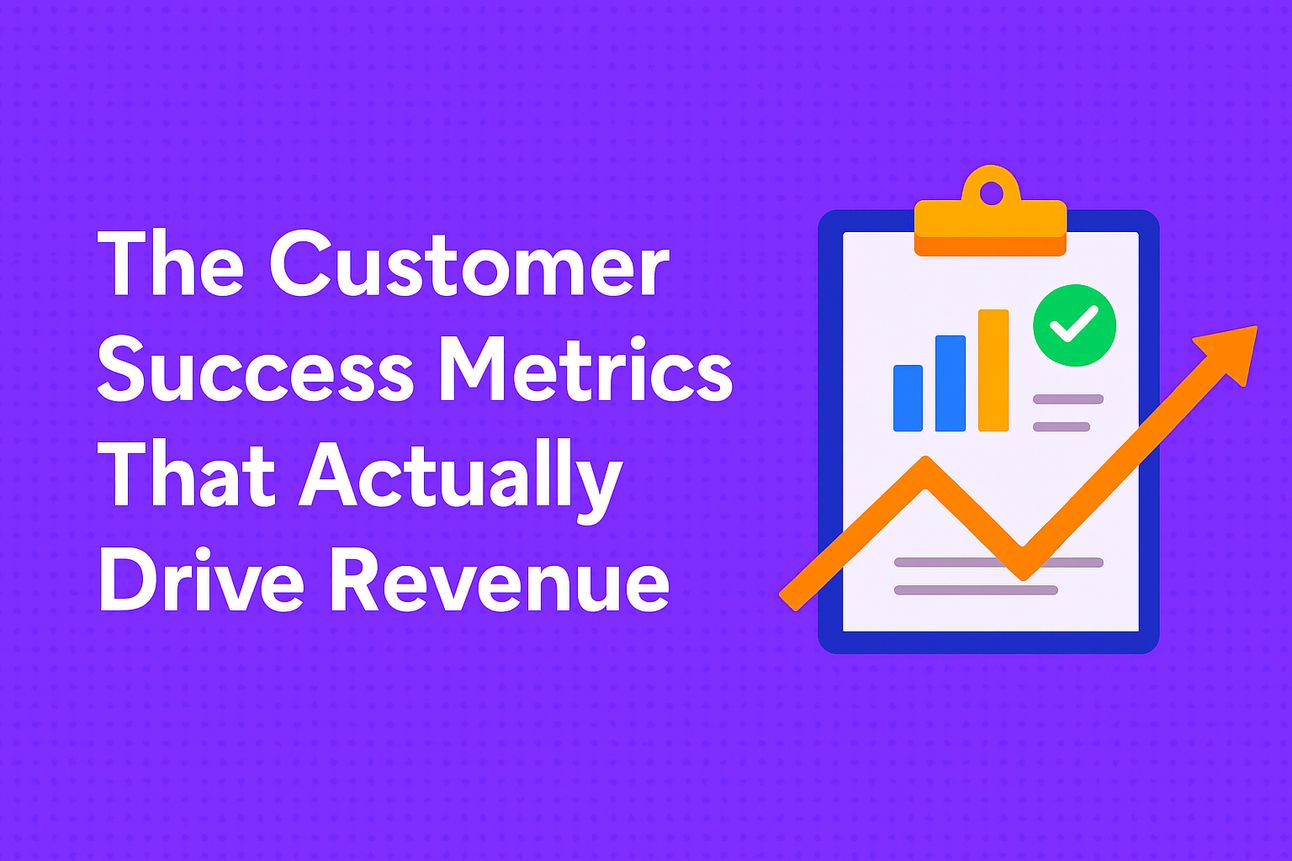- The Profit Loop
- Posts
- Customer Success Metrics That Matter
Customer Success Metrics That Matter

Customer Success Metrics That Matter - and are important to revenue
Too many CS teams are focused on metrics that don’t really matter. For example NPS. This can be great for telling you who likes your product.
But it doesn’t tell you who’s leaving.
Or who’s ready to expand.
Or where your CSMs should actually focus their time.
As a VP of Customer Success, I’ve had a front-row seat to how important metrics really are and if you are focused on the wrong metrics you can be missing the signals that really move the needle on retention and growth.
It’s well beyond time to move past NPS and CSAT.
Here’s a breakdown of the five metrics that actually matter if you want to build a CS org that drives revenue, not just relationships.
1. Time to First Value (TTFV)
Retention starts during onboarding.
The faster a customer sees value, the more likely they are to stick around. It’s that simple.
Measure how long it takes for a customer to:
• Activate a key feature
• Hit a success milestone
• Achieve a specific goal tied to their “why”
The kicker? Shortening TTFV usually means improving onboarding. That’s one of the highest ROI investments you can make in CS.
2. Customer Engagement Score
Think of this as a “how alive are they?” metric.
You want to track:
• Logins and usage frequency
• Number of engaged users/org
• Feature adoption trends
• Response rates to CSM outreach
Track trends over time. Make sure that you are looking at any abnormal changes to your accounts that may spot issues while you can still make an impact to turn them around. If engagement starts dipping, it’s your early warning sign, long before a red NPS or a missed renewal.
Bonus: It also helps you surface expansion-ready accounts who are loving the product but haven’t upgraded yet.
3. Renewal Forecast Accuracy
Every CS leader I know has had that moment:
“We thought they were a sure renewal… and they churned.”
Forecast accuracy is the bridge between CS and the revenue team. It tells you how well your CSMs really understand customer intent, and how well your health scoring + engagement models are calibrated.
Start tracking:
• Accuracy of renewal forecasts by CSM
• Slippage or surprises at EoQ
• How often risk was flagged early enough to act
This isn’t just a metric. It’s a credibility signal for the CS org.
4. Customer-Led Expansion Rate
We all talk about Net Revenue Retention (NRR), but it’s the customer-led expansions that are the purest sign of value.
When customers add seats, upgrade plans, or buy new modules without a sales push, that’s gold.
Track how many of your expansions are:
• CSM-initiated vs. sales-initiated
• Reactive vs. proactive
• Tied to specific product outcomes
This is where CS shifts from a cost center to a growth engine.
5. Customer Health Score (Done Right)
Too many teams treat health scores like a checkbox: usage + support tickets + sentiment = health?
But if your “healthy” customers are still churning, it’s time to rework the formula.
👉 A modern health score should be:
• Segment-specific (your enterprise customers behave differently than your SMBs)
• Weighted by leading indicators (product usage, stakeholder engagement, outcome progress)
• Updated in real time, not once a quarter
A strong health score gives your CSMs prioritized focus, which is everything when you’re scaling.
Bonus Metric: LTV:CAC ratio
Cac is the Cost to aquire a customer. I’ll get into this in more detail in a future post. But at a high level CAC is the total sales and marketing costs divided by the number of customers aquired. So if you spend $100,000 in Sales and Marketing over a quarter and aquire 200 new customers that Cost to Aquire each customer is $500.
It’s an important SaaS metric and for CS leaders knowing your LTV to CAC ratio can show how your efforts around retention impact the overall profitability of the business.
Final Thoughts
Metrics are only as valuable as the action they drive.
If your team is still celebrating high NPS but missing renewals…
If your dashboards are full of red flags but no one knows where to start…
It’s time to rethink your metrics stack.
👉 Track what drives retention.
👉 Double down on what drives expansion.
👉 And build a CS org that earns a seat at the revenue table, every single quarter.
Are there any non-traditional CS metrics that are working well for your team right now? Would love to swap notes.
If you find value from our newsletter please share it with your CS Friends!